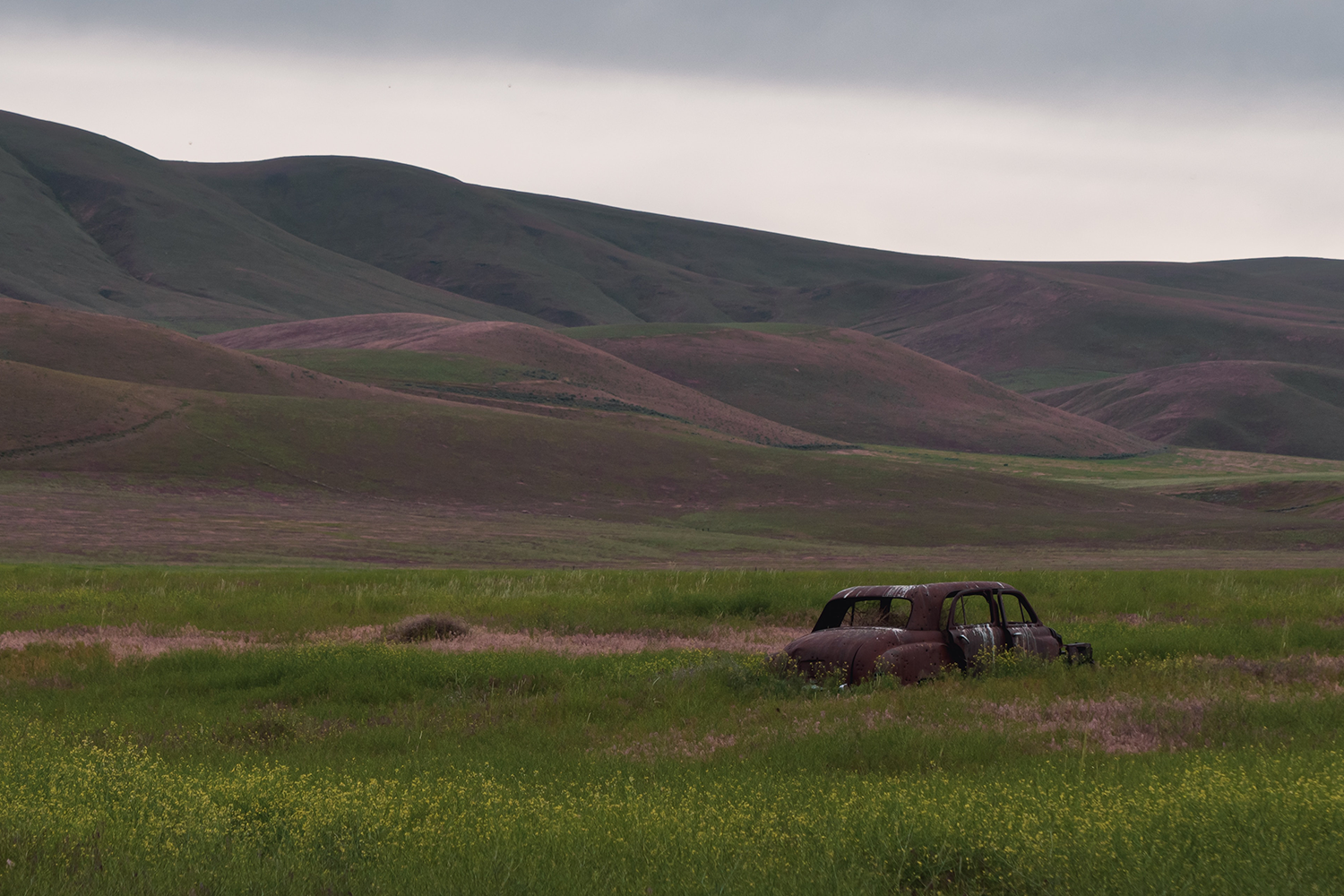Promises, Promises: Rural Advocates vs. Big Philanthropy
Community advocates are still picking up the pieces after a disastrous encounter that led to a unique lawsuit. How did it all come about?

When funding falls through, it can be traumatic for a nonprofit.
In November 2002, a Yakima County, Washington, organizer filed a class action suit against the Northwest Area Foundation (NWAF) for breach of contract.
He argued that the community had done everything it was supposed to do to qualify for the grants tentatively proposed by the foundation, and that NWAF’s ultimate decision not to make the grants violated an implied contract.
Some six years later, community advocates in Yakima County, Washington, and the St. Paul-based Northwest Area Foundation are still picking up the pieces after the disastrous encounter that led to this unique lawsuit.
How did all this come about?
The sprawling eastern Washington farming county, where more than one-fifth nearly twice the state average of the residents lived below the poverty level in 2005, was among the foundation’s community venture sites.
NWAF had allocated a portion of its resources to community-wide antipoverty grants of $10 million to be disbursed over a decade to select communities. The foundation required the sites to undergo a lengthy planning process to qualify for the grant. Brand new organizations were to spring from the planning.
Beginning in 2001, hundreds of Yakima activists and community leaders participated in meetings, seminars, visioning efforts and more meetings. This nearly 2-year, $750,000 process sparked and led by NWAF was long and exhausting.
Like other candidate communities, the Yakima Countians had come to the table knowing they faced steep obstacles especially racial and ethnic divisions.
The county is home to the Yakama Nation, one of the largest Native American nations in the Northwest; some 45 percent of the residents are Latino, many of them farmworkers. They tried to come together because the area had almost no indigenous philanthropic resources. The possibility of a $10 million infusion lured them to the table.
In the end, the foundation declined to fund implementation of the plan, much to Yakima Valley’s shock.
The experience was so traumatic that it spawned a lawsuit, soul-searching by the foundation and much bitterness all the way around. Some in the community are still recovering. Teri K. Johnson-David, economic development director of the Yakama Nation, declined to talk about the experience, writing in an email, This is in the past and should stay there (buried).
Many community participants believed that the foundation misled them. NWAF, recalls Carole Folsom-Hill, executive director of La Casa Hogar Yakima Interfaith Coalition, said that it wanted this to be an integrated process, they wanted to build a structure that would involve the whole community.
Community groups agreed to participate, she said, because the carrot was very enticing. We’re kind of powerless; we’ll do what they say. We don’t have any money, [so] we tried.
The nonprofit organizations, she recalls, were the voice of the community.
“We knew the community well and thought we could influence [the foundation’s] decision.”
People from all perspectives have various explanations for why (or even whether) the process broke down and why the foundation failed to award the grant.
These include problems with NWAF staff turnover, unclear expectations at the start, racial and class tensions among the Indian, Latino and white communities, and the particularities of the Yakama Nation’s engagement process.
According to an NWAF leader, there was no contract, implied or otherwise, that guaranteed that by going through the planning process, the Yakima Valley would automatically receive the grant. The foundation’s view is that the community didn’t come together sufficiently to warrant the 10-year investment.
Among the factors NWAF cited was the unwillingness of the Yakama Nation to sign off on the idea of a new organization that, as in the other venture sites, would have implementation authority.
It was not nice, lamented Folsom-Hill. It looked like it wasn’t top-down, but in the end it was a top-down process.
Perhaps attorney Matthew Metz put his finger on the nub of it when he said that NWAF was trying to substitute for the political process, but government is there for the long haul and [the foundation] proved they weren’t.
He might have added that many of the community advocates are deeply committed to the long haul as well.
Despite their disappointments, it seems that very few in Yakima County supported or were even involved in the lawsuit brought by former United Farm Workers organizer Julio Romero. A foundation lawyer, according to former NWAF staffer Ellery July, considered it a shakedown.
Romero’s legal action, Romero v NWAF, never bore fruit; the courts gave the breach of contract theory some credence, but in the end awarded the plaintiffs inconsequential compensation for the out-of-pocket travel expenses residents incurred to attend planning meetings.
Romero did not respond to Blue Avocado’s attempts to reach him but Metz, who represented him, says the foundation was playing with people’s lives. Nonetheless, he hopes that NWAF continues to move forward with its antipoverty effort.
It was a good program, Metz said. They should give it a chance, but there were difficulties with their administration and personnel.
Meanwhile, NWAF ultimately awarded payoff grants of $250,000 each to a farmworkers clinic and a local college. Unconfirmed reports indicate that a third grant went to the Yakama Nation.
Still, the outcome was so crushing that some might have turned away from community organizing or antipoverty grantmaking for good. Instead, participants are drawing on the experience to shape new projects.
In announcing the appointment of a new president late last month, the foundation said in a press release that its board had moved to adopt significant changes based on lessons learned from the community ventures program, including the Yakima Valley experience.
(Another NWAF endeavor a community ventures program targeting urban Indian communities in Seattle, Portland, Billings and Rapid City had faced similar problems, prompting an NWAF special committee to reconsider the situation and ultimately disperse more than $6 million in grants.)
Future foundation strategy will be to make grants to proven or promising organizations doing effective poverty reduction work in their communities or in the region.
In other words, NWAF will no longer try to construct new organizations where established groups already exist, an approach confirmed by NWAF Board Chairman David Kemmis.
There are always subtle local dynamics and nuances of relationships that it’s almost impossible to know unless you have lived with them for years or decades
Kemmis told Blue Avocado.
In Yakima Valley, faith tempered by bitter experience is bringing community advocates to the table once again so that the community can take advantage of a large new project initiated by the Bill and Melinda Gates Foundation.
The foundation has decided to launch an early childhood education program in the Valley as part of its Thrive by Five program. With a plan made in the Gates Seattle headquarters, not Yakima Valley, community leaders sometimes whisper and wonder whether this initiative will be just one more ill-fated foundation experience like the one they had with NWAF.
Even so, in the hope that Gates will bring desperately-needed resources to Yakima Valley, the community is again gearing up its hopes and working through a process with a big foundation, hoping that this time they won’t end up feeling misled and abandoned.
You might also like:
- Why Are Nonprofits Experiencing An Insurance Crisis? And What Can the Nonprofit Sector Do About it?
- Rethinking Perpetuity: Resetting Endowment Expectations After the Pandemic
- Risk Management for Nonprofits: Copyright
- Don’t Let Internal Controls Slip at Your Nonprofit Organization!
- Five Emergency “Musts” for Your Nonprofit
You made it to the end! Please share this article!
Let’s help other nonprofit leaders succeed! Consider sharing this article with your friends and colleagues via email or social media.
About the Author
Rick Cohen‘s investigative reporting appears in every other issue of Blue Avocado. His articles on the Decline & Fall of the Vanguard Foundation recently won a Min Award for journalism. A memory from his days as Director of Housing and Economic Development for an unnamed city in New Jersey includes giving a conference speech in Atlantic City on real etate tax abatements, and then playing blackjack at the “cheapo $5 table” the rest of the day while waiting for the mayor so they could go home.
Articles on Blue Avocado do not provide legal representation or legal advice and should not be used as a substitute for advice or legal counsel. Blue Avocado provides space for the nonprofit sector to express new ideas. The opinions and views expressed in this article are solely those of the authors. They do not purport to reflect or imply the opinions or views of Blue Avocado, its publisher, or affiliated organizations. Blue Avocado, its publisher, and affiliated organizations are not liable for website visitors’ use of the content on Blue Avocado nor for visitors’ decisions about using the Blue Avocado website.








I was disheartened to hear of the Yakima area’s experience with NWAF. Our community piloted a Horizon’s Leadership project with NWAF with an eye toward finding ways to mitigate poverty in our community. The result was disasterous. Our thriving, involved and very active community association disintegrated through the process, we ended up with no financial advantage through grant opportunities for having endured this 18 month process and two years later we are still struggling to find a way to put humpty dumpty back together again. As for poverty reduction – that hasn’t happened either. It was a disappointing experience all the way around.
Duchess, Thanks for your comment. (I loved that you were able to share what sounds like a bitter experience without ranting!) Seems this was a really tough experience. What are some of the ways you all are trying to get yourselves back together?
Duchess, Thanks for your comment. (I loved that you were able to share what sounds like a bitter experience without ranting!) Seems this was a really tough experience. What are some of the ways you all are trying to get yourselves back together?
Facinating that so much money caused so many problems. I wasn’t close to it, but my community in Central Oregon received the NWAF grant and seemed to be worse off for the investment. Funding working models seems prudent, but I would like to believe commnities could come together and create spectacular results with this kind of investment.
The conclusion in a comment by Greg that Central Oregon is worse off due to a grant from NWAF is ill-supported and regretfully too widely held. If results were duly researched you would find extraordinary results from the early community model including: the rapid launch and development of 4 new rural clinics enabling 8000 patient visits with caseworker support, spawning of the tri county childcare coalition, investments in early childhood and youth initiatives, boosting community kitchen in conjunction with community newspaper that led to incorporation of a new city, spawning a land-trust affordable model that was adopted by housing authority, and an effective action team on Warm Springs reservation has and will continue to forever change the economic future due to this legacy grant with NWAF. After structural changes the Central Oregon grantee is now making regional institutional benchmarks with education and workforce initiative and a focus on collaborative solutions with public and private sector addressing the causes of poverty rather than more resources to the symptoms.